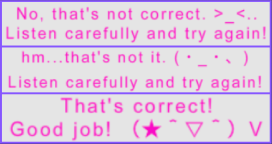HELLO UNIVERSE!~ (If you get the reference👏)
I have a few posts scheduled to come out before this so I feel like this one will have a ‘blast from the past’ kind of vibe to it when its published because it was written a while ago (25th September). I’m currently finishing a Hong Kong rose milk tea that I brewed a little while ago and feeling a bit hyped. Why? I would blame the tea, but truth be told, I never know. Anyone new to my blog might be wondering why I’m not writing about Chinese. If that’s what you’re looking for, please navigate through my posts by using the search function or the folders on the bottom left and you should find something relevant. Older readers would remember that I’ve branched out into topics about other countries in East Asia in the past and so writing about Japanese is nothing too strange.
I decided to take advantage of my ‘tea fuelled’ madness to write this post whilst I still have the gumption. Few of you who know me well may know that I get easily bored or distracted, even fewer of you have seen this in fruition. Oftentimes when I’m practicing language work it turns into me reading the language in question in weird accents or in sing song. 不瞒你说 it’s actually a lot of fun. Sadly I think this process of writing tamed my hypedness a bit, but I can get back to the actual objective of this post.
Since I’m ‘writing this in past tense’ I’m assuming the previous post was about Japanese versus Korean. As you can see Japanese ₩on for a little while at least. Since I’m starting Japanese completely from scratch I thought I would document some of the steps I took to learn a bit of the basics so you could use that as a beginner starting point for yourself if you wanted to, or maybe to compare learning techniques etc. I’ve been learning Chinese for about 9 years now and during the process I decided not to formally start learning another language on the side because I really wanted to commit to Mandarin. E.g. I chose not to learn Korean with my friends when they decided they didn’t want to read subtitles for their K-dramas. That’s why I took the subsidiary language option (really hoping I wrote the ‘previous post’) so seriously, because I want to similarly commit to the new language on my linguistic plate.
Before you continue, after writing up most of the post already I recommend you read this through once and then a second time more freely if you want to follow my steps to learning the Japanese alphabets. If you want a learning post you can follow the first time round, click here. It will make sense soon.
I’m trying to remember the actual ‘first step’ I took. Well I looked through the resources in the email reply I got from one of the Japanese teachers (if there is a previous post, it might make sense to read it first) and read up on the Japanese alphabet systems, since the Oxford subsidiary course requires the student to learn this mostly through self study. I also talked to a friend who studied a bit of Japanese in the past and then found out that the Japanese alphabets had a lot more than I thought my fragile self could handle x.x -but mind over matter works wonders~~
The next step is the most helpful so far. I went onto this website and pressed the ‘Katakana Stroke Order’. Some of the resources I read through in the first step listed rōmaji (transliteration) spelling for kana syllables so I already tried reading them, but on this site you can also hear each letter being spoken. So I went through the audio for each syllable for Katakana. I also got distracted a bit by instantly replaying some of the audios like のand fake dj-ing. But anyway, I happened to have a spare stack of square shaped note papers available to me and so I used these to make basic flashcards.
After listening to all the audios, following the chronology of letters; I pressed the play button and watched the stroke order, and then drew the letter on to one side of the square paper. I did this using a pink marker (use whatever color speaks to you/you find first). Subsequently I did the same using the Hiragana stroke order section of the site. This time I used a red marker pen. The cards I made were for the basic syllables only and do not include the additional sounds. When I made the flashcards I tried not to stack them in a chronological pile and instead mix them up so that after they were done I could try to lay the cards out in alphabetical order. Once I got to this step I tried arranging the cards in alphabetical order and then the process of correcting the order by checking my notes (I actually mention the notes in the 2nd following paragraph, but I’m writing in a weird order today) was another good subliminal form of revision. After laying the cards out in the correct order I wrote the rōmaji for each letter on the other side of the card. I did Katakana and Hiragana at the same time in order to reaffirm what I had just revised. E.g. I wrote the rōmaji at the back of the cards for あ and アand then moved on to い and イand so on.
I realized that reading this in present tense might come off a bit weird, but I’m going to stick with this since I like experimenting. Next I shuffled the cards and tried matching the Katakana and Hiragana by placing the cards with the same sound next to eachother. E.g. ふ and フ both with the sound ‘fu’. I then checked if I got them correct and rearranged the cards I got wrong. I found this helpful pdf with a chart placing Hiragana and Katana nicely beside eachother and used that to check my answers. I wish I found that a week ago >.> Next I tried the quizzes on the site I used for stroke orders. I even made a little collage of some of the responses I received after inputting my answers…

On to the next step. In ‘real time’, at this point, I haven’t completed all the previous steps but I didn’t want to forget my ideas so I’m writing them first #Keeping it real. In a notebook (you could use a sheet of paper or a few) I wrote down the rōmaji for all the letters, as well as all the Hiragana and Katakana letters in three sections (I recommend you writing rōmaji on the left column, followed by Hiragana and then Katakan). For easy reference. These are the notes I referred to two paragraphs ago. After that I made a game almost like ‘Pairs’. If you’ve been following my steps with me, you could ‘play’ too.
Here’s the steps to my ‘Kana Pairs’:
- Choose what to focus on (Katakana, Hiragana or Rōmaji)
- Have the cards faced a certain way
- Choose a letter to find
- Pick one of the faced down cards
- Turn the card around to reveal if you were correct or not
Another thing to note and I can now tell you after coming from the future-ish, is that you will need 92 blank squares of paper if you plan on following the flashcards I made. However size doesn’t always matter and the environment will thank you if you decide on making these small. Do what works for you. Protip: try to write the letters quite big in proportion to the paper size, that way the letters will stick out to you when revising. For bonus points you can make 46 extra cards with only Hiragana and Katakana on either side. This makes for another exhilarating round of KANA PAIRS –kind of, as you get to target your memorization of sounds. I’ll probably make these if I continue to pursue Japanese, but if you make these then the following is how I suggest you use them. Refer to your list of letters and cover the Kana side. Pick the rōmaji letters you find difficult to remember. If you’re also a ‘beginner beginner’ and every letter is bothering you, take turns with the letters. After picking a letter, try finding the matching Kana card. After finding the Kana, intermittently flip between both sides of the Kana and repeat the sound, I would probably end up doing this in sing-song. If you couldn’t find the Kana at the start, uncover the Kana from the list and then find them. After a while you could see if you can spell random words, using Katakana at least.
This game is also versatile. Here’s some variations to help your revision:
- Hiragana side facing up
- Katakana side facing up
- A mixture of both and then the next time swap them around on another round
If my game steps come across quite simple, I wasn’t being sarcastic. Simplicity works with me as I sometimes have the memory of a table. 啊 but a table is a lot in Philosophy isn’t it? Okay I’m losing myself again🙄
In general the letters look really cool to me, but being the true linguist that I am, I appreciate the form of most~ Some of my initial reactions were that certain Hiragana syllables look a bit like the & symbol. シ and ツ look like sassy smiley faces; サ looks like an inverted 也 (although せ better resembles也); ユ and ヨ felt very modern Korean, and I’ve somehow associated ふ with Squidward. What are your thoughts?
Now that I’ve finished this post I think I’ve managed to come up with some great steps for approaching the Japanese alphabet as a complete beginner. If I do say so myself~ I really enjoyed writing this 😀 Before making this I was quite put off learning the Japanese alphabets because of the large amount of letters they have; however after putting effort into making these games and trying the online quizzes I will miss Japanese a bit if I switch to Korean. Part of me wishes there was an option to study both -.-
Lastly I apologize (一点点) for writing like this today. I haven’t in the past, so let’s blame the tea. Apologizing and tea, how British 😂 (but it was HK tea, but then there’s the history of Britain and HK so…). Okay I’m DONE. x ☕️
If you try sharing your tips for learning a new alphabet whilst divulging your overactive mind, good luck 世界。
此致敬礼欣妍 – From Xinyan.

